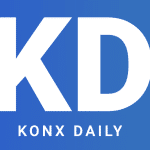GameStop Corp. (NASDAQ: GME) stock declined by 2.31% at the last close while the GME stock price plunged by 3.25% in the pre-market trading session. GameStop is a video game, consumer electronics, and gaming merchandise retailer based in the United States. The company is based in Grapevine, Texas, and it is the world’s biggest game retailer.
GME stock’ Financial Highlights
GameStop Corp. announced its financial results for the third quarter of 2021. Here’s the summary:
- For the third quarter of 2021, net sales were $1.297 billion, up from $1.005 billion in the third quarter of 2020.
- Sales from new and expanded brand collaborations, such as Samsung, LG, Razer, Vizio, and others, helped the company grow in the third quarter.
- Inventory was $1.141 billion at the end of the quarter, up from $861 million at the same time last year, indicating the Company’s focus on front-loading inventory investments to meet rising customer demand and alleviate supply chain concerns.
- Ended the period with $1.413 billion in cash and cash equivalents and no debt other than a $46.2 million low-interest, unsecured term loan related to the French government’s COVID-19 response.
- New offices opened in Seattle, Washington, and Boston, Massachusetts, both of which are technology hubs with well-developed talent markets.
- Secured a new $500 million ABL facility with enhanced liquidity and terms, including lower borrowing costs, fewer constraints, and more flexibility, which was completed in November, soon after the third quarter ended.
Furthermore,
By examining the corresponding GAAP financial metric, comprehending the variances between the GAAP and non-GAAP financial measures, and integrating these data points into their decision-making process, the company compensates for the constraints of Adjusted EBITDA as an analytical tool. Adjusted EBITDA is presented in conjunction to, not as a replacement for, the Company’s financial results calculated in accordance with GAAP, and should not be viewed in isolation or as a substitute for an analysis of their GAAP performance.









